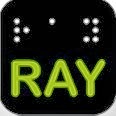A father recounts the preconceived limits his son imposed on himself, and how he showed his son that despite his physical disabilities, he can be like anyone else with a little improvisation. Similarly, innovative accessibility and assistive technology will enable the blind and visually impaired to lead their daily lives as a sighted person would. The blind can fulfill big dreams too.
Read the article and watch the video here






















